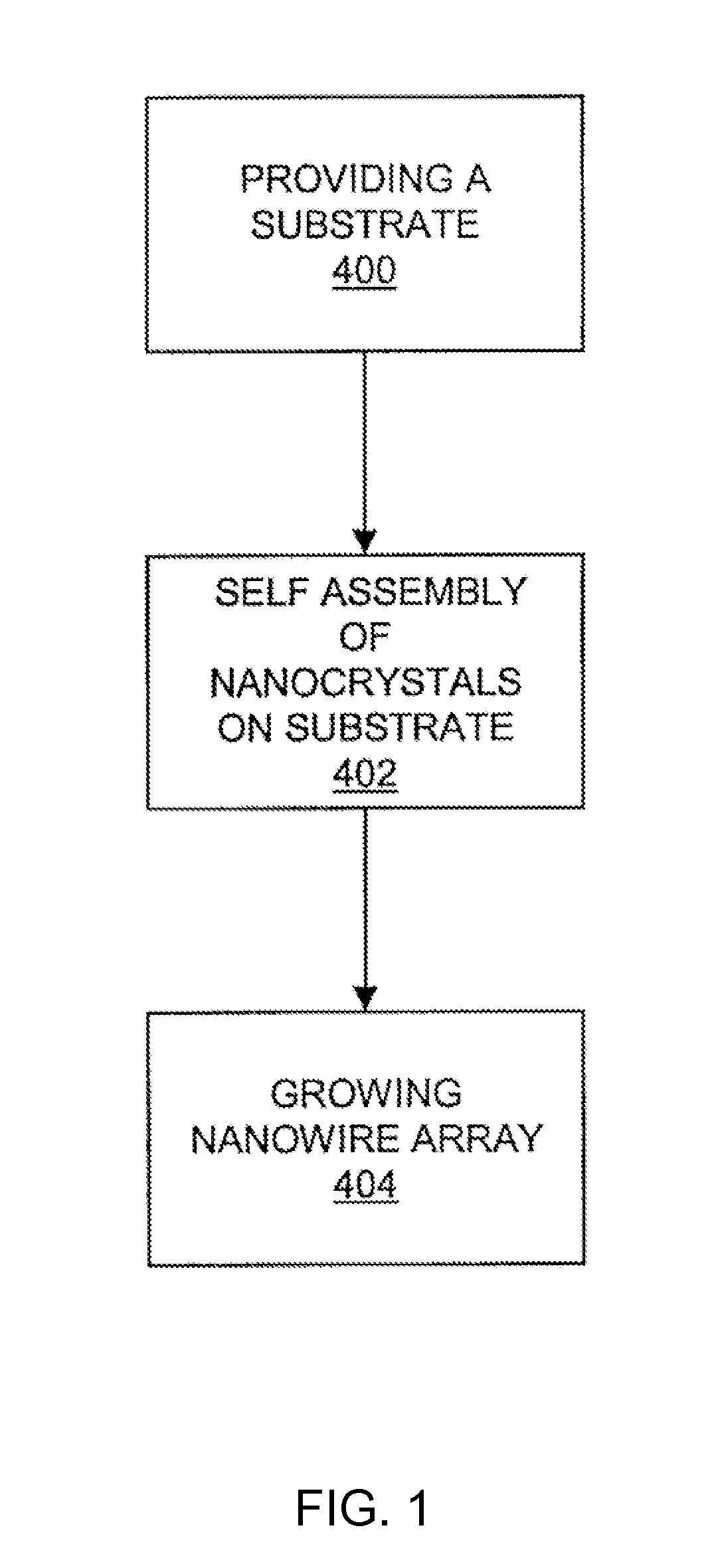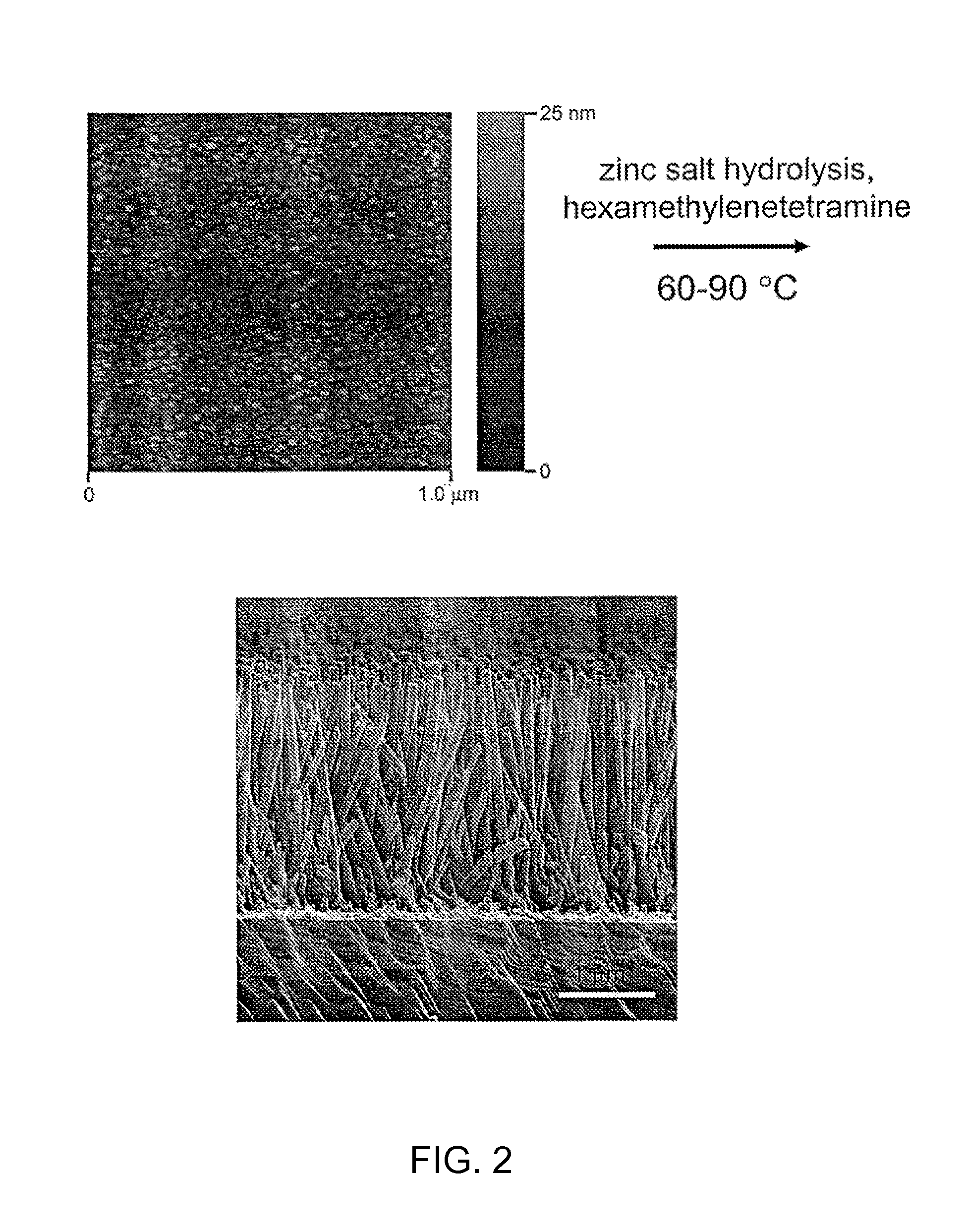Nanowire array and nanowire solar cells and methods for forming the same
a solar cell and nanowire technology, applied in the direction of final product manufacturing, sustainable manufacturing/processing, semiconductor/solid-state device details, etc., can solve the problems of high cost of manufacturing conventional solar cells, limiting their widespread use as a source of power generation, and increasing costs
- Summary
- Abstract
- Description
- Claims
- Application Information
AI Technical Summary
Problems solved by technology
Method used
Image
Examples
Embodiment Construction
[0040] Embodiments of the invention are directed to nanowire arrays, devices including nanowire arrays, and methods for making the same. In embodiments of the invention, synthetic methods can be used to produce homogeneous and dense arrays of nanowires. The nanowires can be grown on various substrates under mild aqueous conditions. Solution approaches to producing nanowires are appealing, because they can use low temperature processing steps that are suitable for scale-up.
[0041] In one exemplary embodiment of the invention, homogeneous and dense arrays of ZnO nanowires were synthesized on 4-inch silicon wafers using a mild solution process at 90° C. Uniform ZnO nanocrystals were first deposited on the substrates to act as seeds for subsequent hydrothermal nanowire growth on the substrates. This procedure yielded single crystalline wurtzite ZnO nanowires grown along the [0001] direction. The nanowires were oriented perpendicular to the wafer surface. By controlling the reaction time...
PUM
| Property | Measurement | Unit |
|---|---|---|
| lengths | aaaaa | aaaaa |
| lengths | aaaaa | aaaaa |
| lengths | aaaaa | aaaaa |
Abstract
Description
Claims
Application Information
 Login to View More
Login to View More - R&D
- Intellectual Property
- Life Sciences
- Materials
- Tech Scout
- Unparalleled Data Quality
- Higher Quality Content
- 60% Fewer Hallucinations
Browse by: Latest US Patents, China's latest patents, Technical Efficacy Thesaurus, Application Domain, Technology Topic, Popular Technical Reports.
© 2025 PatSnap. All rights reserved.Legal|Privacy policy|Modern Slavery Act Transparency Statement|Sitemap|About US| Contact US: help@patsnap.com



